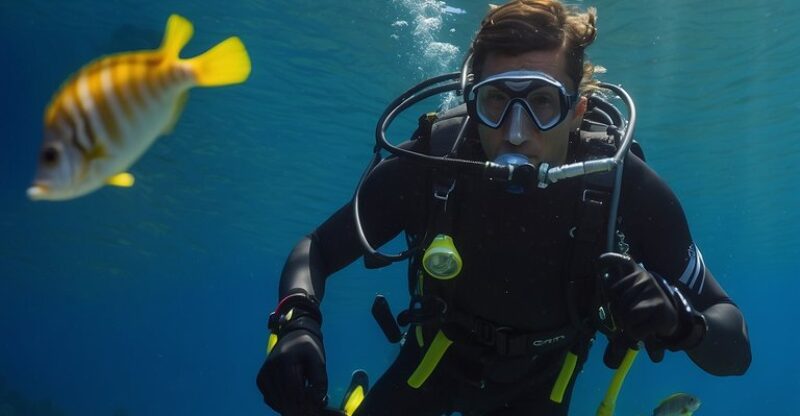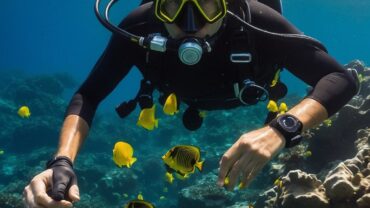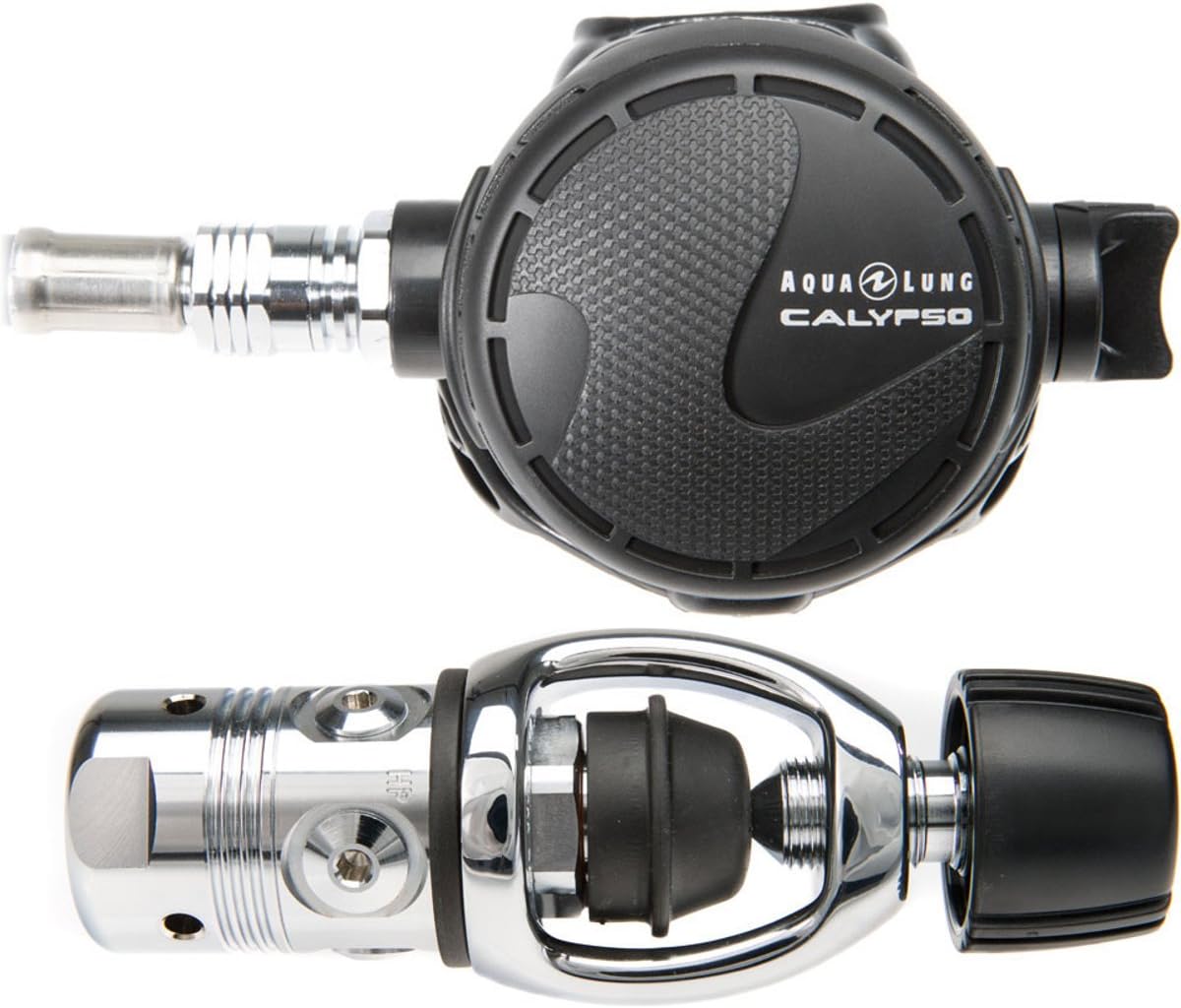Best Scuba Diving Regulators for Beginners: Top Picks and Buying Guide
Choosing the right scuba diving regulator can make a significant difference for beginners. The best scuba diving regulator for beginners balances ease of use, reliability, and comfort. Diving enthusiasts who are just starting out should look for regulators designed for warm or cold water diving, which offer consistent performance in various conditions.

One top recommendation for new divers is the Apeks XTX200, known for its versatile design and performance in both warm and chilly waters. Another excellent option is the Cressi XS2/AC2, which provides a budget-friendly yet reliable choice. These regulators are crafted to help beginners feel at ease while exploring underwater environments.
While selecting a regulator, beginners should pay attention to key features like durability, ease of breathing, and maintenance requirements. Quality regulators ensure safe, enjoyable dives and set a solid foundation for anyone’s scuba diving journey.
Key Takeaways
- The best regulators for beginners combine ease of use, reliability, and comfort.
- Apeks XTX200 and Cressi XS2/AC2 are excellent choices for new divers.
- Focus on durability, ease of breathing, and maintenance when choosing a regulator.
Understanding Scuba Diving Regulators
When choosing a scuba diving regulator, it’s essential to understand its main components and how different types work. This knowledge helps ensure better performance and safety underwater.
Components of a Scuba Regulator
A scuba regulator has several key parts. The first stage attaches to the tank and reduces high-pressure air to an intermediate pressure.
The second stage delivers air to the diver and includes a mouthpiece. The hose connects these stages, ensuring a smooth air flow.
There is also an emergency alternate air source, often called the octopus. Finally, the pressure gauge shows tank pressure, letting the diver monitor their air supply.
First Stage Types: Diaphragm vs. Piston
First stages come in two main types: diaphragm and piston. A diaphragm first stage uses a flexible membrane to regulate air. It performs well in cold or dirty water, keeping internal parts isolated from the environment.
A piston first stage can be either balanced or unbalanced. Balanced pistons deliver consistent air flow regardless of tank pressure. Unbalanced pistons may change breathing resistance as tank pressure drops, making them less efficient but simpler in design.
Both designs offer reliable performance but choosing between them depends on the specific diving conditions.
The Relevance of DIN and Yoke Valve Systems
Scuba regulators connect to tanks via DIN or yoke systems. DIN valves screw directly into the tank, offering a more secure seal, especially suited for technical and high-pressure diving.
Yoke systems, also known as A-clamps, clamp over the tank valve. They are user-friendly and widely used in recreational diving.
DIN valves are more robust and less likely to dislodge, providing an extra level of safety. Yoke valves are easier to use but might not handle high-pressure tanks as well as DIN valves.
Choosing between DIN and yoke depends on the type of diving and personal preference.
Key Features for Beginners
When selecting a scuba diving regulator as a beginner, it’s essential to focus on the ease of breathing and the type of regulator. Understanding these features will help ensure a comfortable and safe diving experience.
Ease of Breathing and Performance
One of the most critical aspects of a scuba regulator for beginners is the ease of breathing. A high-performance regulator should deliver air smoothly and consistently, reducing the work of breathing underwater. This can make a significant difference, especially for new divers who are still getting accustomed to breathing underwater.
Look for features like breathing adjustments and a venturi switch. These allow divers to fine-tune the airflow according to their needs, minimizing breathing effort. A pneumatically balanced regulator can offer consistent airflow at different depths, ensuring smooth breathing even as pressure changes.
In addition, regulators like the Apeks XTX200 are known for their excellent breathing performance in both warm and cold waters, making them versatile choices for various diving conditions.
Balanced vs. Unbalanced Regulators
A crucial decision beginners need to make is choosing between balanced and unbalanced regulators. Balanced regulators, such as the Apeks XTX200, provide consistent airflow regardless of tank pressure. This makes breathing easier at any depth and with varying air supplies.
In contrast, unbalanced regulators may deliver less consistent airflows as the tank pressure drops. While often more affordable, they might require more effort to breathe from as the dive progresses.
Many beginners prefer balanced regulators due to their reliability. For example, the Aqualung Helix features a balanced diaphragm first stage, ensuring stable and smooth airflow, which is crucial for novice divers.
Understanding these features will help beginners make informed choices, enhancing their diving experience.
Evaluating Scuba Regulator Durability

Durability is critical when evaluating scuba regulators, considering factors like materials used and the manufacturer’s warranty. The right combination of design, material selection, and proper maintenance ensures a reliable regulator for all diving conditions.
Material Considerations and Design
Materials play a significant role in the durability of scuba regulators. Titanium and chrome-plated brass are popular choices due to their strength and resistance to corrosion. Titanium is lightweight and rust-proof, making it suitable for saltwater environments. Chrome-plated brass combines strength and durability, often found in high-end models.
Regulators with an environmentally sealed first stage prevent water from entering internal components. This design is essential for diving in cold or dirty water, as it reduces the risk of freeze-ups or contamination. The Atomic Aquatics B2 is an example of a regulator with a chrome-plated brass body, offering both durability and reliability.
Maintenance and Lifetime Warranty
Regular maintenance is key to extending the life of a scuba regulator. It’s important to rinse the regulator with fresh water after each dive and perform annual servicing. Manufacturers often provide detailed maintenance guides to help maintain the regulator’s performance.
A lifetime warranty can be an indicator of a manufacturer’s confidence in the product’s durability. Brands like SCUBAPRO and Apeks offer lifetime warranties on some models, ensuring the regulator can be serviced and repaired for years. For instance, the Apeks XTX200 is noted for its robustness and durability, backed by a strong warranty. Regular upkeep, combined with a reliable warranty, ensures long-term reliability and safety when diving.
Beginner’s Guide to Choosing a Regulator

Selecting the right scuba diving regulator is crucial for a safe and enjoyable diving experience. Focus should be on matching the gear with your specific needs and budget.
Determining the Best Fit for Your Needs
When choosing a scuba diving regulator, consider the type of diving you plan to do. If you dive in cold waters, you’ll need a regulator that performs well in low temperatures, like the Apeks XTX200. For warm-water diving, more general models might suffice.
Look at the performance features. High airflow regulators, like the Scubapro MK25 EVO/A700, provide smoother breathing, which is beneficial for both beginners and experienced divers. Also, ensure the regulator fits comfortably, including the mouthpiece and hoses.
Finally, check for user reviews and expert recommendations. The Aqualung Leg3nd Elite is often praised for its balance of performance and reliability.
Affordability and Value for Money
Budget is an important factor for beginners. You don’t need to spend a fortune to get a reliable regulator. The Aqualung Calypso is a top choice for those looking for affordability without sacrificing quality.
Compare prices from different manufacturers. Some higher-end models like the Atomic Aquatics TFX may offer advanced features but come at a premium. On the other hand, budget-friendly options like the Cressi XS2/AC2 offer good performance at a lower cost.
Look for deals and bundles that include other essential scuba gear. These can provide better value for money while ensuring you get all the necessary equipment in one go.
Regulator Features for Different Dive Conditions

Diving regulators come with various features tailored for specific conditions. Understanding these features helps in choosing the right equipment for a safe and enjoyable dive.
Cold-Water Diving Considerations
When diving in cold water, it is essential to select a regulator designed to prevent freezing. Environmentally sealed regulators are crucial as they keep water out of the first stage, reducing the risk of ice formation that can cause free-flow.
Additionally, diaphragm-based regulators are often preferred for cold-water diving. They can handle lower temperatures better than piston-based ones. Models like the Apeks XTX200 are known for their reliability in cold conditions, thanks to their sealed systems and freeze-resistant components.
Enhanced heat exchangers, which dissipate the cold, are another important feature. These help maintain a consistent air supply even in freezing water. It’s also wise to look for a regulator with a second stage that resists freezing, ensuring smooth and reliable breathing in extreme cold.
Adjustable Features for Variable Diving Environs
For divers who frequently change diving environments, adjustable features on regulators provide essential versatility. Adjustable intermediate pressure allows divers to fine-tune their breathing resistance, making it easier to breathe at different depths and conditions.
User-adjustable inhalation resistance is another key feature. For example, the Aqualung Helix offers such adjustments, enabling a smoother inhale effort that caters to personal preference and varying dive scenarios.
Venting adjustments, often found on the second stage, allow divers to control the airflow, making it easier to adapt to changes like rapid ascent or dense waters. Smooth performance across a range of temperatures and depths is also essential, with models like the Scubapro MK25 EVO/A700 standing out for their high airflow and adaptability to different conditions.
These adjustable features are particularly important for those diving in different environments, from warm tropical waters to cooler lakes, providing customization that enhances performance and comfort with each dive.
Top Recommended Regulators for Beginners

When starting out with scuba diving, choosing the right regulator is crucial. The options below are known for their reliability, performance, and ease of use, making them ideal for new divers.
ScubaPro MK25 EVO/A700 for Robust Performance
The ScubaPro MK25 EVO/A700 is well-regarded for its high performance under various conditions. This regulator offers a balanced piston first stage, ensuring consistent airflow at any depth or pressure.
Its smooth breathing experience is beneficial for beginners who need reliability. The MK25 EVO/A700’s design also accommodates cold water diving, making it versatile. Its durable construction promises longevity, while the ergonomic mouthpiece enhances comfort during long dives.
With a chrome-plated brass body, this regulator combines robustness with precision, providing a solid start for new divers.
AquaLung Calypso for Reliability and Affordability
The AquaLung Calypso is a trusted choice among beginner divers for its affordability and dependability. This regulator features a simple and straightforward design, which makes it easy to use and maintain.
The single-hose design and balanced diaphragm first stage deliver consistent performance. It is lightweight, reducing the strain on the diver, and the ergonomic mouthpiece enhances comfort.
This regulator performs well in both warm and cold waters, giving new divers the confidence to explore different environments. Its budget-friendly price point makes it accessible without compromising on quality.
Apeks MTX-RC for Precision and Control
The Apeks MTX-RC is praised for its precision and control, qualities that are essential for beginner divers. This regulator features a rugged over-balanced diaphragm first stage, ensuring superb performance even in the harshest conditions.
It’s designed to be highly resistant to freezing, making it a reliable choice for cold water diving. The MTX-RC also includes user-adjustable breathing settings, allowing divers to fine-tune airflow according to their needs.
Its robust construction ensures durability, while ergonomics enhance comfort. This regulator provides new divers with the control they need to manage their underwater breathing efficiently.
Additional Equipment Compatible with Regulators

When using scuba diving regulators, it’s important to have compatible equipment for safety and efficiency. Key items include octopus, gauges, and alternate air sources, as well as connecting inflator hoses and accessories.
Octopus, Gauges, and Alternate Air Sources
An octopus is a vital piece of equipment, providing a secondary mouthpiece connected to the low-pressure port. This can be shared with a buddy in case of emergency.
Submersible pressure gauges (SPGs) are another essential item. They connect to the high-pressure port and show the remaining air pressure in the tank. It’s crucial for monitoring air supply during a dive.
Alternate air sources include both integrated and standalone systems. Integrated systems combine the inflator and alternate air source into one unit. Standalone systems are separate devices, often attached to another low-pressure port. High-quality brands ensure reliability and durability underwater.
Connecting Inflator Hoses and Accessories
A connecting inflator hose links the buoyancy control device (BCD) to the low-pressure port of the regulator. This allows the diver to adjust buoyancy easily during a dive by adding or releasing air from the BCD.
Accessories like quick-disconnect fittings can be used to easily attach and detach the inflator hose from the regulator. Other useful items include hoses protectors that prevent wear and tear at the connection points.
Ensuring compatibility between the regulator and these accessories is important. Divers should check the specifications, like hose length and fitting type, to ensure smooth operation and maximum safety during dives.
For more detailed lists and recommendations on regulators and compatible equipment, you can visit DIVE Magazine’s best scuba diving regulators for 2023 or Social Diving’s guide for beginners.
Safety and Operational Knowledge

For beginner scuba divers, understanding air pressure and managing bubble interference and noise are vital for a safe underwater experience. Proper knowledge ensures that divers maintain buoyancy and reduce distractions during a dive.
Understanding Air Pressure and Buoyancy
Scuba diving involves navigating through different water depths, each with varying air pressure. At greater depths, air pressure increases, which affects buoyancy and air consumption. Divers use a pressure gauge to monitor air levels. For recreational depths, usually up to 40 meters, balancing these factors is essential.
Buoyancy is controlled using a buoyancy control device (BCD). It helps divers ascend, descend, and maintain neutral buoyancy. Using the BCD properly prevents rapid ascents, which can be dangerous due to pressure changes. Understanding these controls and the impact of depth on air consumption ensures a safer dive.
Managing Bubble Interference and Noise
Bubble interference can obscure vision and create noise, which may distract divers. Managing bubbles is crucial, especially when diving in environments with limited visibility or navigating tight spaces. Regulators that offer smooth and consistent air delivery can help manage this issue.
Noise from bubbles and other sources can be distracting underwater. Divers should practice breathing techniques to minimize excessive noise. In noisy environments, clear communication using hand signals or dive slates becomes even more important. This helps maintain focus and ensures that the dive proceeds safely.
By grasping these concepts, beginner divers can have smoother and safer dives, enhancing their underwater experiences.
Technical Aspects and Standards

Understanding the technical aspects and standards of scuba diving regulators is crucial for beginners. These aspects ensure the safety, reliability, and performance of your equipment.
Regulatory Standards and Testing
Scuba diving regulators must meet specific standards to ensure they operate safely and effectively. One key standard is the European Conformance Standard EN250, which sets requirements for the performance of regulators, including safe breathing rates and maximum depth.
Another important measurement is the work of breathing, often quantified in joules per liter. This measures the effort required to breathe through the regulator under various conditions. Lower values indicate easier breathing.
Regulators are also subjected to ergonomic testing to assess factors like ease of clearing and purge stiffness. The ANSTI wet breathing simulator is used to objectively gauge performance under real-life conditions, such as varying depths and breathing rates. These tests help identify how well a regulator can handle high demand without compromising comfort or safety.
Advanced Features and Innovations
Modern scuba diving regulators incorporate various advanced features to enhance performance and user comfort. For instance, the Aqualung Helix Pro features an auto-closure device (ACD) that seals the regulator when not in use, preventing water and debris from entering.
Adjustable settings for breathing resistance and venturi effects are also common in high-end models, allowing divers to fine-tune their equipment for different diving conditions. Features like ergonomic mouthpieces and lightweight second stages improve comfort and reduce jaw fatigue during extended dives.
Technological innovations like tidal volume and respiratory minute volume (RMV) indicators help divers monitor their air consumption more accurately. Models like the Apeks XTX200 are designed to function flawlessly in various demanding environments, including cold water and cave diving. This makes them versatile choices for beginners seeking reliable performance across different diving scenarios.
Frequently Asked Questions

This section addresses common questions about choosing and using scuba diving regulators for beginners. It covers essential features, reliability, budget options, travel considerations, recommended sets, and reputable brands.
What are the top features to consider when choosing a diving regulator for beginners?
Key features include ease of breathing, durability, and weight. Regulators should have a simple design and be easy to use. Look for models with adjustable settings and good airflow.
How do I determine the reliability of a scuba diving regulator?
Check for trusted brands and read user reviews. Look for regulators that meet industry standards and have high ratings. Reliable regulators are tested for performance under different conditions.
What are the best scuba diving regulators for those on a budget?
For those on a budget, the Aqualung Calypso is a reliable choice. The Cressi XS2/AC2 is also recommended for its affordability and performance.
What factors make a scuba regulator ideal for travel?
A travel-friendly regulator is lightweight and compact. It should be easy to pack and carry. Durability and performance in various water conditions are also crucial.
Can you recommend a beginner-friendly regulator set for scuba diving?
The Apeks XTX200 is excellent for beginners. It handles cold and warm water well. The Scubapro Mk25 EVO/A700 offers smooth breathing and is beginner-friendly.
Which brands are known for producing high-quality diving regulators suitable for novice divers?
Reputable brands include Apeks, Aqualung, and Scubapro. They are known for producing reliable and high-quality regulators. These brands often appear in top recommendations for both beginners and experienced divers.









